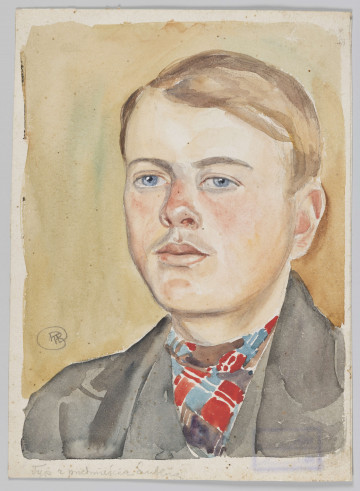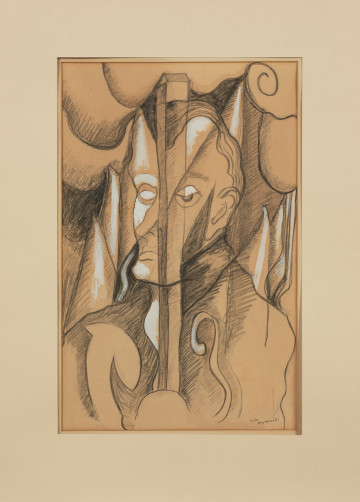
Type from the suburbs of Lublin
1901 — 1925
National Museum in Lublin
Part of the collection: European classics of modernity
Born and raised in Karlín in Prague, Wlastimil (actually Vlastimil) Hofman came from a Polish-Czech family. His family's move to Kraków in 1898 meant that the boy, who had been drawing from an early age, began evening courses with Franciszek Cynk at the Academy of Fine Arts during his secondary school years, and when, after a year, he decided to apply to the academy, he became a full-fledged student of his master. Two years later he moved to the studio of Jacek Malczewski, whose painting, filled with literary themes, left an indelible mark on Hofman's work. To the end of his life he was criticised as an epigone of the famous symbolist, but for the same reason he became a favourite of the general public. A career which began in the salons of the Society of Polish Artists Sztuka and the Vienna Secession was interrupted by the outbreak of the First World War. Hofman left for Prague where he settled in the villa of his cousin, Ludvík Hammer, beautifully located on Na Hřebenkách Avenue in the garden district of Smíchov. In 1915 he was called up to the Austro-Hungarian army, and after falling from his horse during exercise he was taken to the lazarette. I was lying on my back on a soldier's bed, with no will to live or do anything, I only wanted to dream and contemplate. My only consolation came from the Books of [the Polish nation and] the [Polish] pilgrimage, my solace was the Ghost King, and my solace Anhelli. (after: Władysław Prokesch, Wlastimil Hofman, Kraków 1919, p. 10). The set of readings inherited from Malczewski's National Romanticism soon resulted in paintings with symptomatic titles: Madonna Syberyjska [Madonna of Siberia], Kielich goryczy [The Chalice of Bitterness], Jasełka do kolędy Słowackiego [The Nativity to Słowacki's Christmas Carol], Matka Polka [The Polish Mother], Powrót [Return], In Shackles [W kajdanach], Legionista [The Legionary]. A makeshift studio in a cousin's flat hosted many military men who ordered portraits. There, the artist also created a self-portrait in the characteristic towel format (German: Handtuchformat), usually reserved for stimmung landscapes (German: Stimmungslandschaft), also of Romantic origin.
Szymon Piotr Kubiak
Author / creator
Dimensions
cały obiekt: height: 46,5 cm, width: 82,5 cm
Object type
painting
Creation time / dating
Creation / finding place
Identification number
Location / status

1901 — 1925
National Museum in Lublin

1915
National Museum in Szczecin

około 1920
National Museum in Szczecin
DISCOVER this TOPIC
Castle Museum in Łańcut
DISCOVER this PATH
Educational path